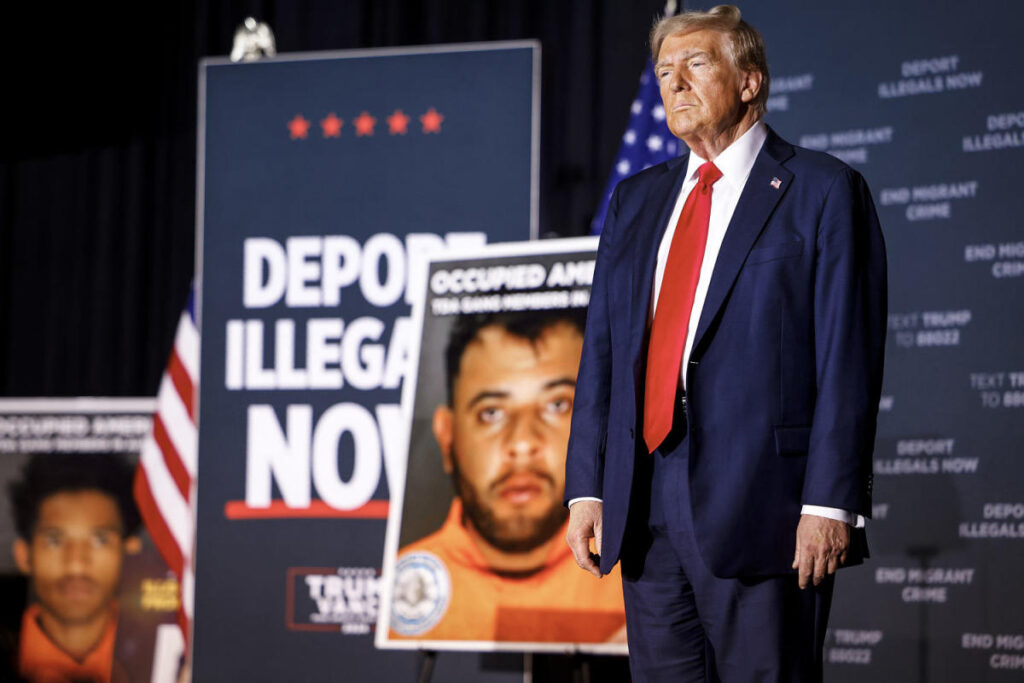During a rally in Aurora, Colorado, former President Donald Trump delivered a dire portrayal of the city, claiming it had been overtaken by the Venezuelan prison gang Tren de Aragua, also known as TDA. Despite Trump’s assertions, Aurora’s police chief, Todd Chamberlain, firmly stated that the city remains “very safe” and a vibrant community. Chamberlain acknowledged that while there is some gang activity, the focus of law enforcement is to prevent gang growth rather than to circulate narratives of widespread crime. His comments came in response to alarmist claims that were fueled by social media content suggesting a gang takeover of an apartment complex—something police later confirmed lacked evidence.
Trump’s statements about Aurora fit into a recurring theme in his campaign, which seeks to underscore the dangers he associates with immigration. He argued that immigrants from challenging environments are harming American communities, specifically citing incidents he claims are evident in Aurora. Notably, his rhetoric included exaggerated assertions of violence and crime attributed to immigrant populations, signaling a tactic aimed at rallying his base around fears of societal decline and loss of safety. By invoking the images of immigrants coming from prisons and psychiatric facilities, Trump sought to create a narrative of urgency and fear regarding immigration policy.
At the rally, Trump pledged to “rescue Aurora and every town that has been invaded” by what he described as criminal elements. He proposed a strategy called Operation Aurora, outlining a plan to use the Alien Enemies Act of 1798 to deport alleged members of TDA and other gang affiliates. This approach reflects a broader campaign message focused on stringent immigration enforcement, which resonates with a segment of the electorate concerned about crime and changes in local demographics. However, the amplification of such narratives has drawn criticism from local leaders who contend that Trump’s descriptions of community safety do not accurately reflect the reality on the ground.
In contrast, Police Chief Todd Chamberlain emphasized the importance of focusing on crime prevention without resorting to mass deportation initiatives. He clarified that the priority of law enforcement is to ensure justice and safety for all residents, regardless of their immigration status. This stance highlights a fundamental philosophical divide between local authorities seeking to maintain public safety and Trump’s more confrontational stance on immigration that could lead to broader enforcement measures. Chamberlain’s commitment to inclusive policing serves as a counter-narrative to Trump’s more divisive approach, suggesting a potential risk of alienating vulnerable communities in law enforcement efforts.
The rally was also marked by Trump’s attempts to expand his narrative about immigration beyond Colorado, using Aurora as a case study to demonstrate the purported dangers facing suburban areas across the United States. This trend can be seen in his rhetoric regarding other cities, such as Springfield, Ohio, where he made unsubstantiated claims related to immigrant behavior. The focus on grilling local immigrant communities and elevating fears around their presence speaks to a calculated effort to mobilize supporters around a shared apprehension about the changing cultural landscape and related crime implications.
As Trump’s campaign continues to rely heavily on themes of crime and immigration, local leaders and law enforcement officials face the challenge of countering these narratives with factual and community-centered messaging. The situation in Aurora serves as a microcosm of a broader national dialogue about immigration, crime, and community cohesion. While Trump leverages fear for political gain, local officials like Chamberlain are tasked with building trust and safety in their communities, which underscores an ongoing tension in how America addresses immigration and public safety.

